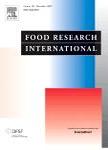版权所有:内蒙古大学图书馆 技术提供:维普资讯• 智图
内蒙古自治区呼和浩特市赛罕区大学西街235号 邮编: 010021

作者机构:Deakin Univ Sch Life & Environm Sci Nutr & Seafood Lab NuSea Lab Queenscliff Vic Australia Deakin Univ Sch Life & Environm Sci Burwood Campus Melbourne 3125 Australia
出 版 物:《FOOD RESEARCH INTERNATIONAL》 (Food Res. Int.)
年 卷 期:2025年第201卷
页 面:115554页
核心收录:
学科分类:0832[工学-食品科学与工程(可授工学、农学学位)] 08[工学]
基 金:School of Life and Environmental Sciences Deakin University
主 题:Machine learning algorithm Spatial classification Authentication Valorisation Seaweed Heavy metals
摘 要:Sustainable seaweed value chains necessitate accurate biomass biochemical characterisation that leads to product development, geographical authentications and quality and sustainability assurances. Underutilised yet abundantly available seaweed species require a thorough investigation of biochemical characteristics prior to their valorisation. Abundantly available Australian seaweed species lack such comprehensive investigations within the global seaweed industrial value chains. Aiming to bridge this gap, this study characterises Phyllospora comosa thallus segments (blades, stipes, and vesicles) and unsegmented samples collected from separate locations in Victoria, Australia using high throughput characterisation techniques and machine learning classification models. Carbohydrate (64-68 %), ash (27-31 %), potassium (31.01 - 65.01 mg/g), sodium (20.36 - 30.59 mg/ g), calcium (15.10 - 18.40 mg/g), magnesium (7.71 - 11.81 mg/g) and iodine (1.57 - 2.74 mg/g) were the most abundant nutrients of the P. comosa biomasses, on a dry weight basis. Variations between segments showed that stipes were rich in carbohydrate, blades in glutamic acid, calcium, magnesium, and iodine and vesicles in potassium, suggesting differing valorisation paths. The rpart classification separated the collection sites based on cadmium: Bancoora 10.61 mg/g (dw) or protein 45.25 mg/g (dw) stipes and vesicles and then by potassium : vesicles 44.88 mg/g (dw) stipes with a 100 % accuracy. These highly accurate characterisation and classification methods, when applied to larger sample sizes will assist in the diversification and expansions of authentic and sustainable Australian seaweed value chains.